Historical Fun at Manitou Cliff Dwellings
One of my favorite things about traveling is being able to bring history to life, and our visit to the Manitou Cliff Dwellings did not disappoint. The kids and I studied the Anasazi last year in our homeschool, so we were all looking forward to seeing how they lived. These cliff dwellings were originally located in McElmo Canyon in southwestern Colorado and were transferred to Colorado Springs, from 1904 to 1907. First they were moved by oxen and then shipped via railroad. After the move was completed, they were opened to the public. They were reassembled with concrete mortar, allowing individuals to walk inside and explore them.
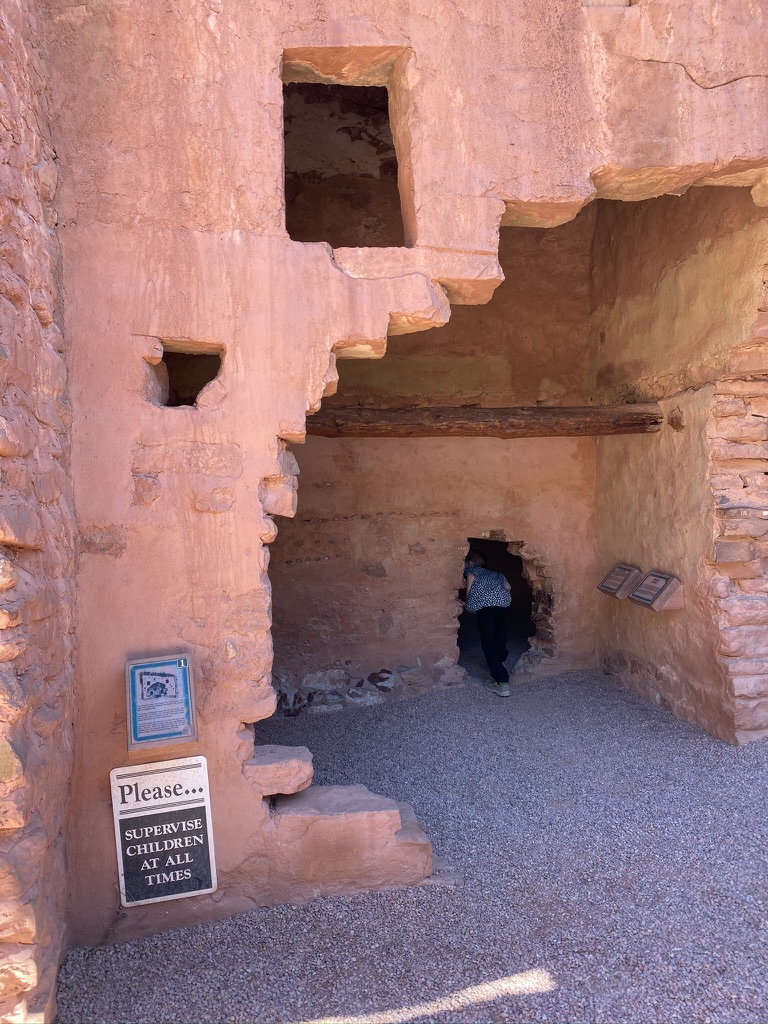
The day of our visit the weather was perfect. The sun was shining and the fall air was crisp and refreshing without being too chilly. We started out with a walk through the museum and gift shop and then headed outside to walk through the cliff dwellings.
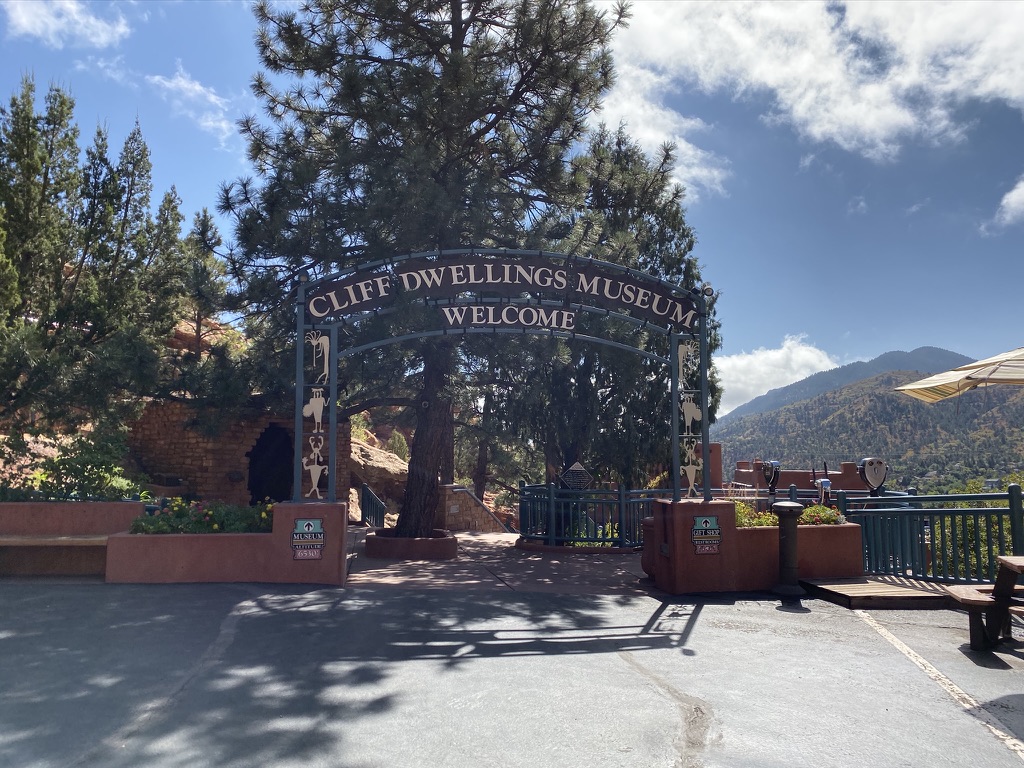
The museum was a wealth of information, and had a lot of great artifacts to look at. The Anasazi, meaning “the ancient ones”, lived in Utah, Colorado, New Mexico and Arizona from approximately 1000-1300 AD. They lived in permanent structures which were pit-houses and then transitioned to cliff dwellings.
Pueblos are thought to be descendants of the Anasazi, and the museum is housed in a 3-story Pueblo-style building.
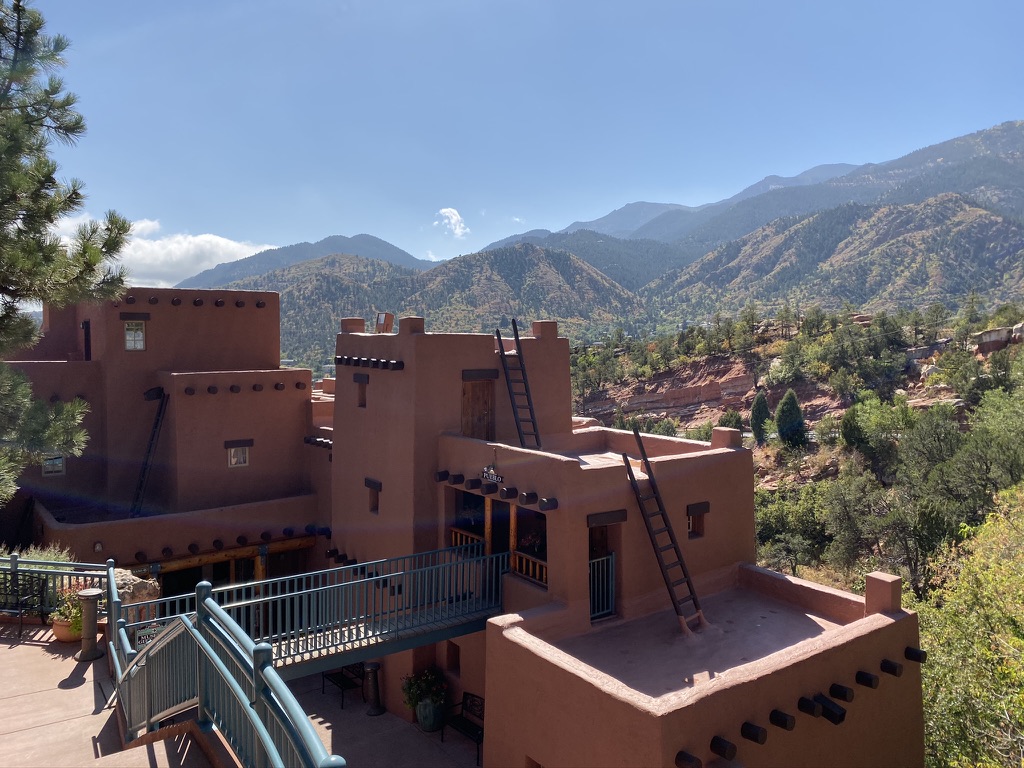
The cliff dwellers were farmers who grew corn, beans, and squash, and were resourceful hunters who wasted nothing, even using bones for tools. There were several types of baskets on display, some of which were so tightly woven that they could hold water. After a 24 year drought the Anasazi seemed to disappear, possibly joining other tribes.
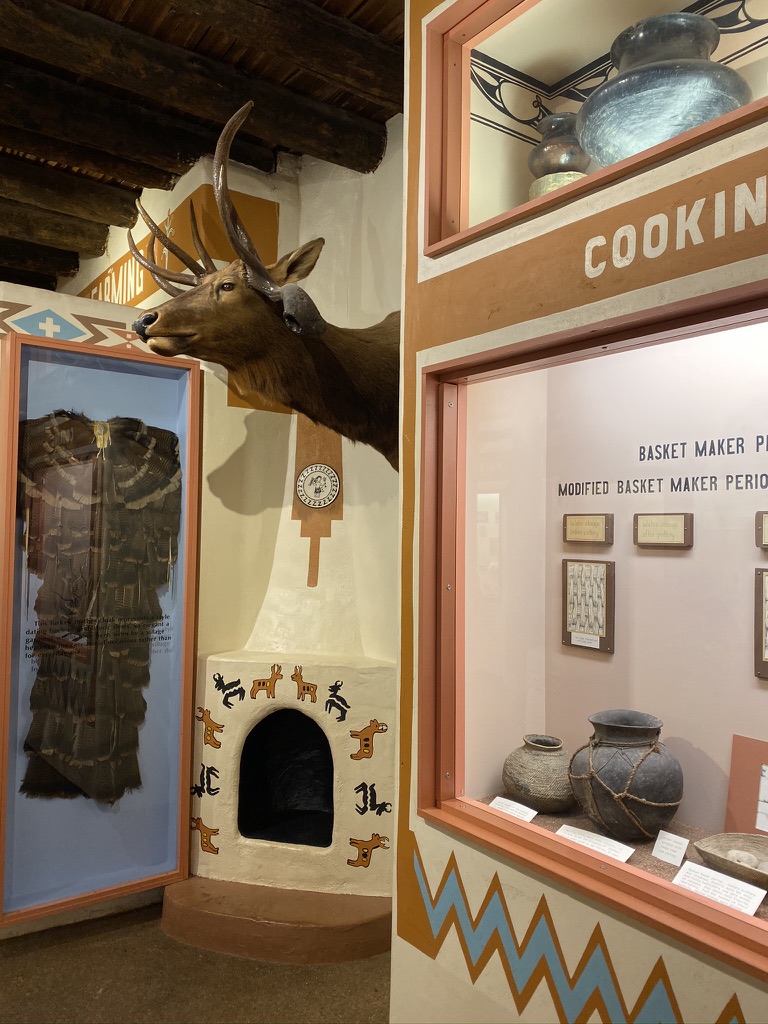
The rooms of their dwellings would be small, approximately 6’x8′ and only 5 1/2′ high. Small rooms were necessary in order to keep warm.
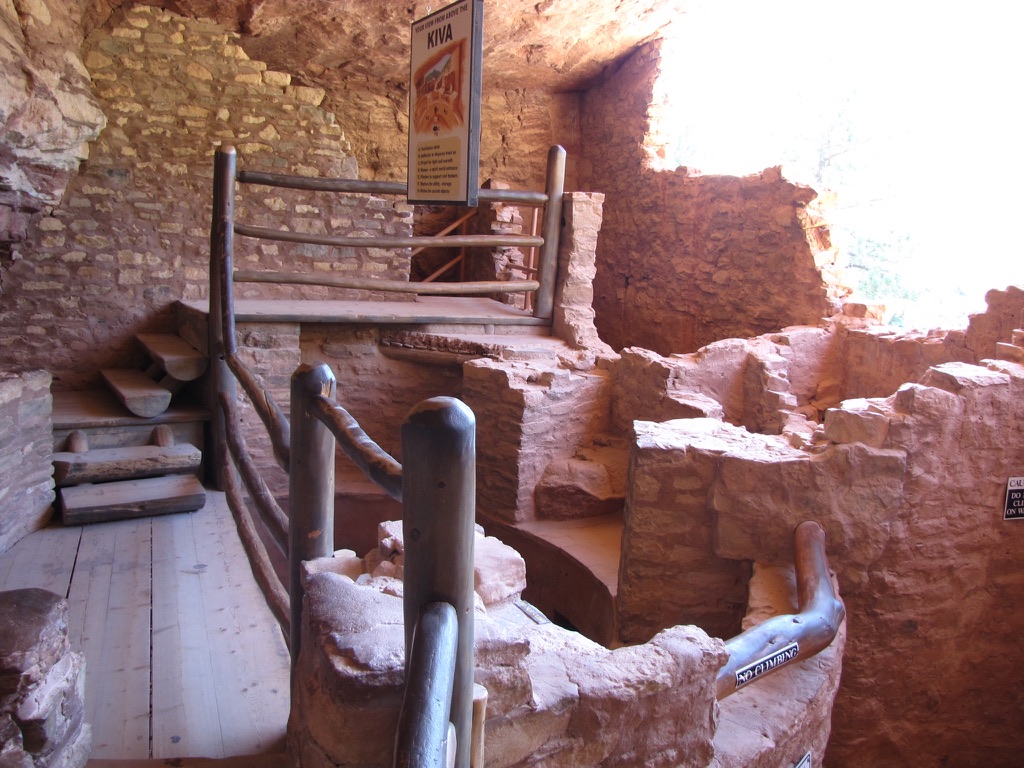
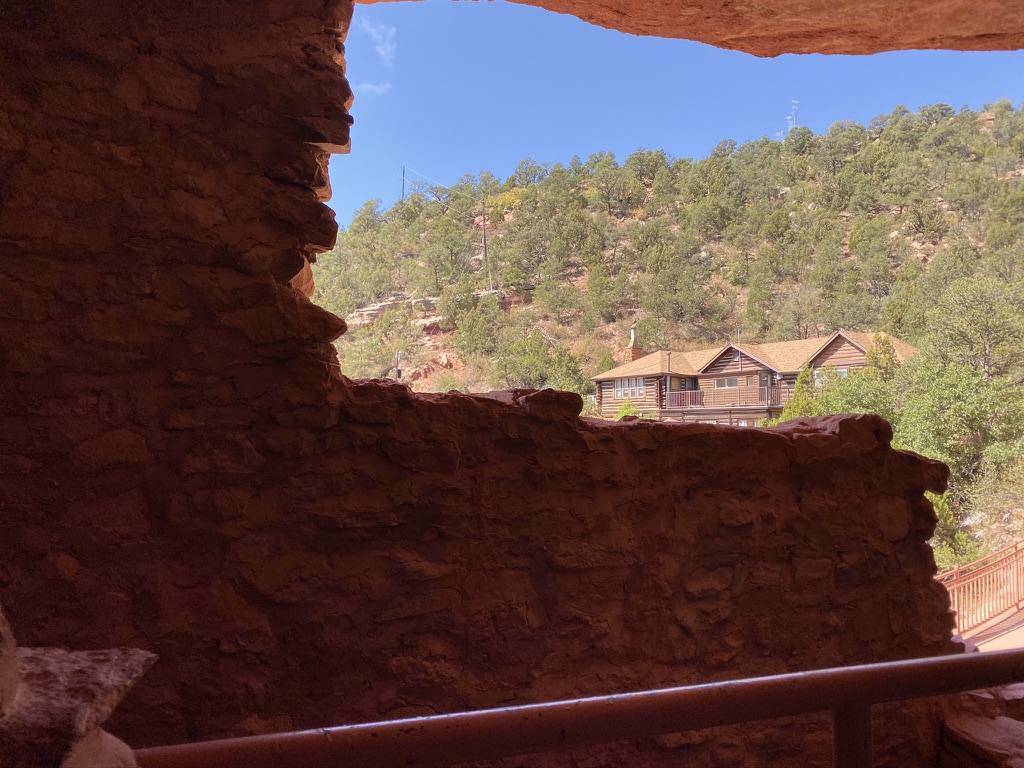
The second and third floors could only be accessed via a ladder. When intruders would approach they could simply pull up the ladder. Windows and doors were small and could be closed with a stone. Pegs hanging off of dwellings would be used for hanging meat and vegetables.
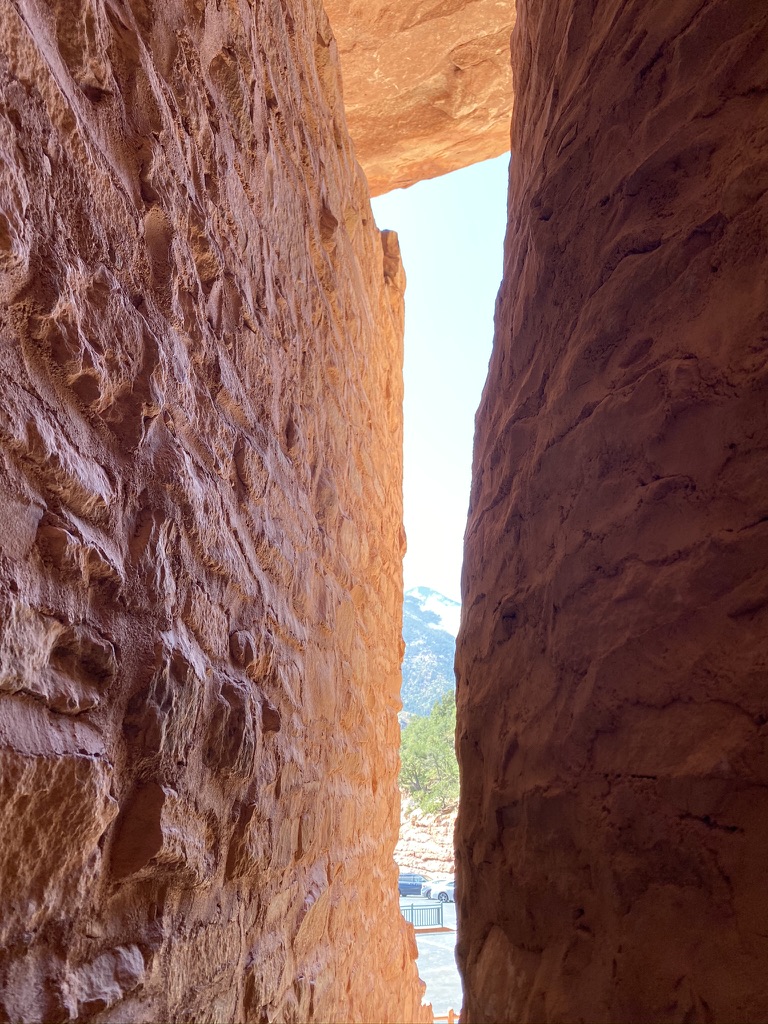
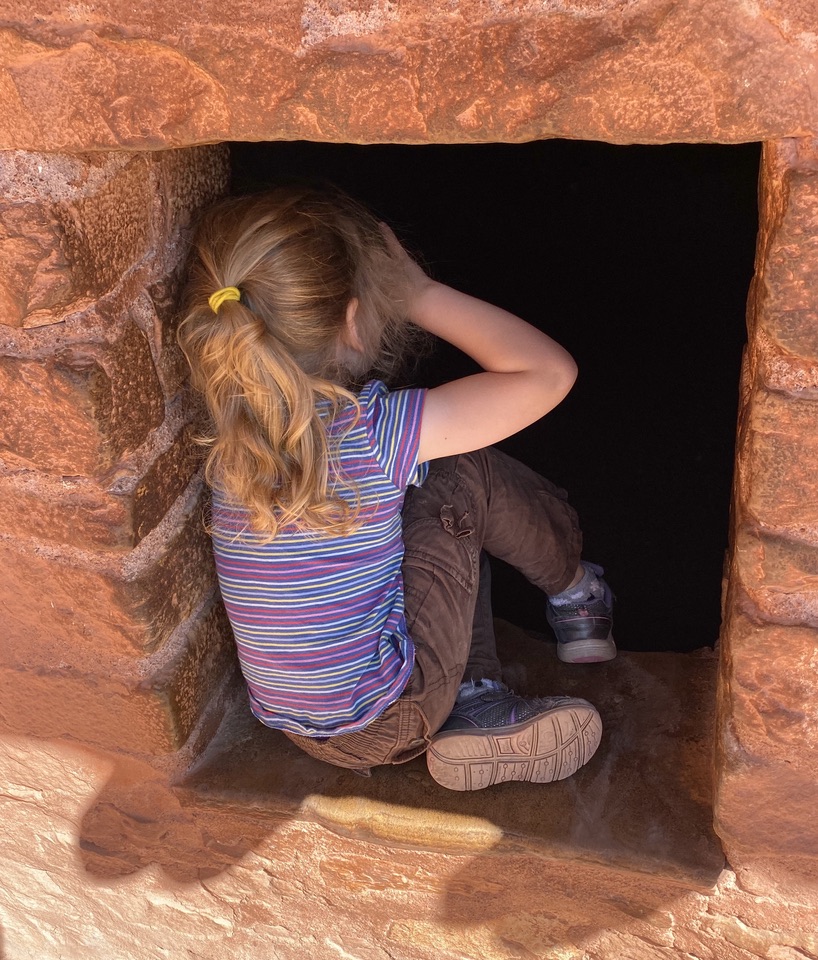
The Horno, beehive-shaped oven, was used for baking bread. Inside this oven up to 30 one-pound loaves could be baked at once.
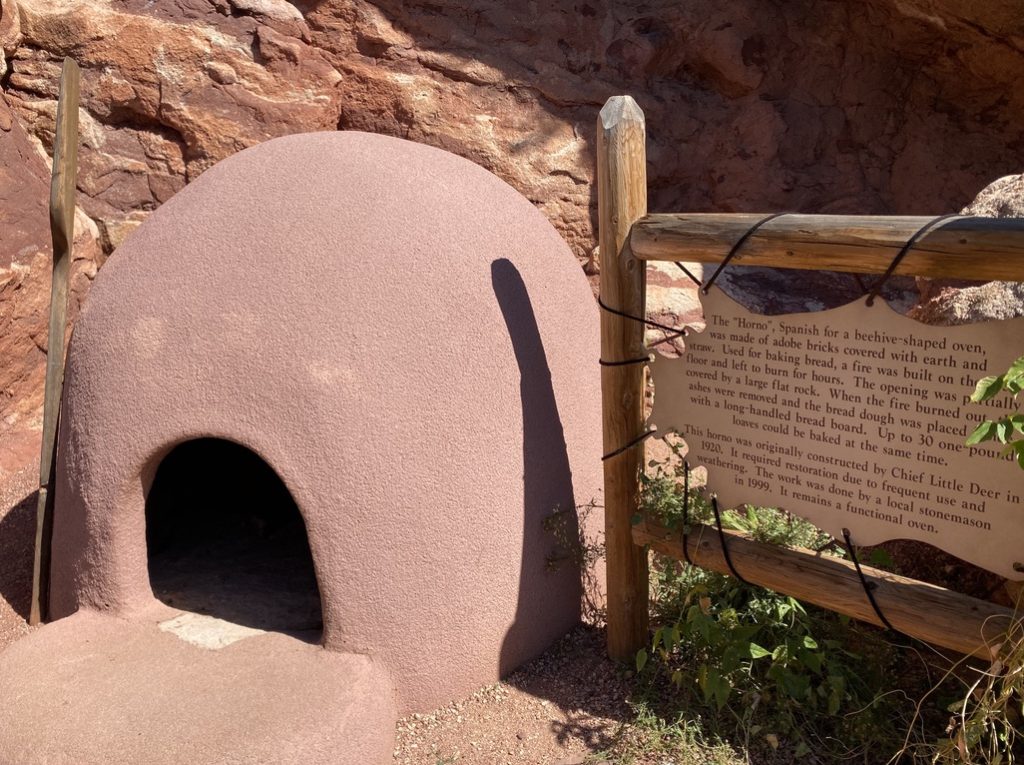
Micah really enjoyed grinding her own meal and pretending she was a cliff dweller. “Metate” stones were used to grind grain, and a flat “mano” stone would be slid back and forth to turn the grain into meal.
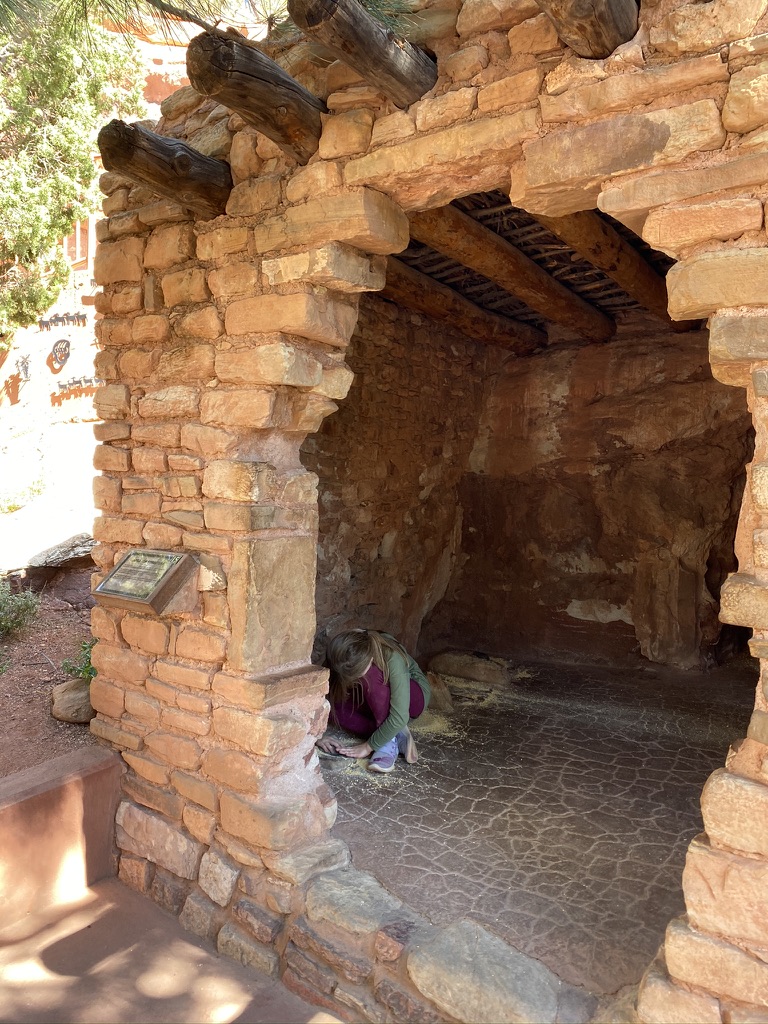
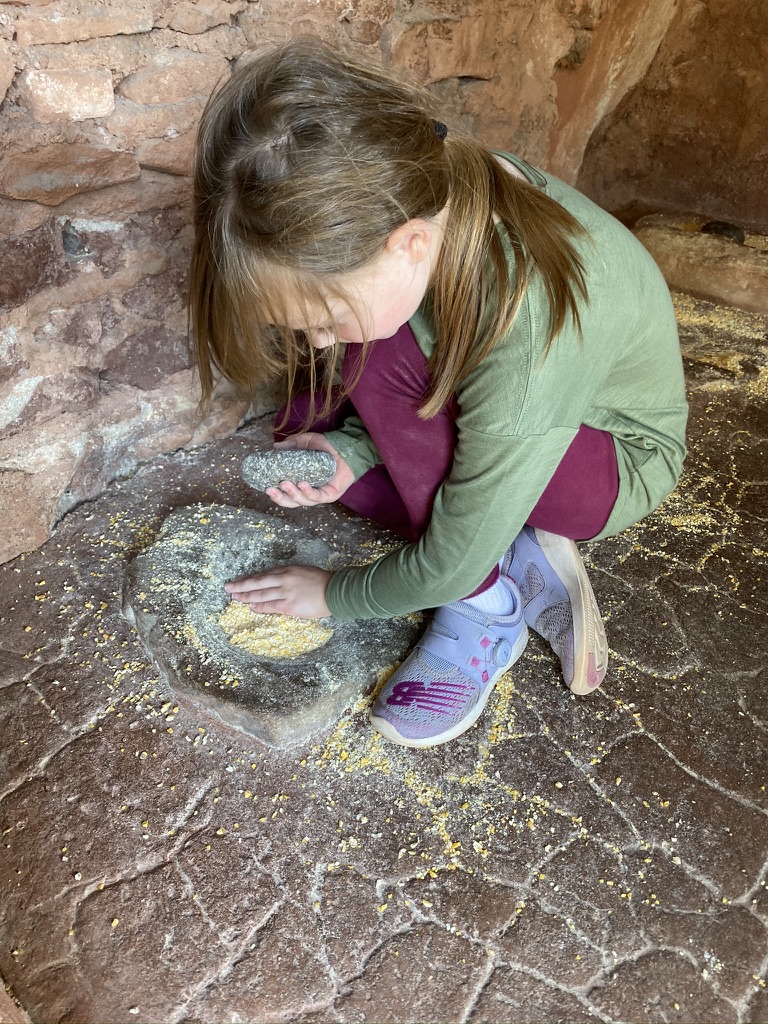
After exploring the museum and cliff dwellings, you can sit outside and enjoy the exquisite view.
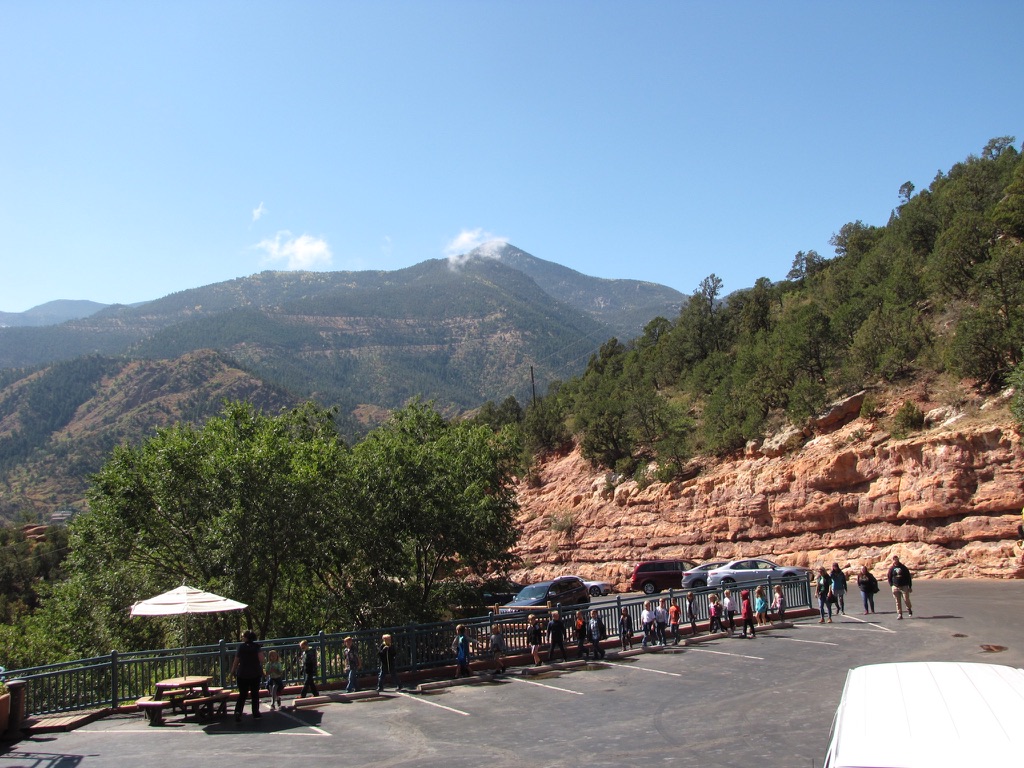
For another look at our visit to the Manitou Cliff Dwellings, check out our YouTube video below. You can also read about Day 1 of this trip and our visit to the Red Rocks Amphitheatre and Casa Bonita, as well as the first part of Day 2 and a look at the Garden of the Gods.
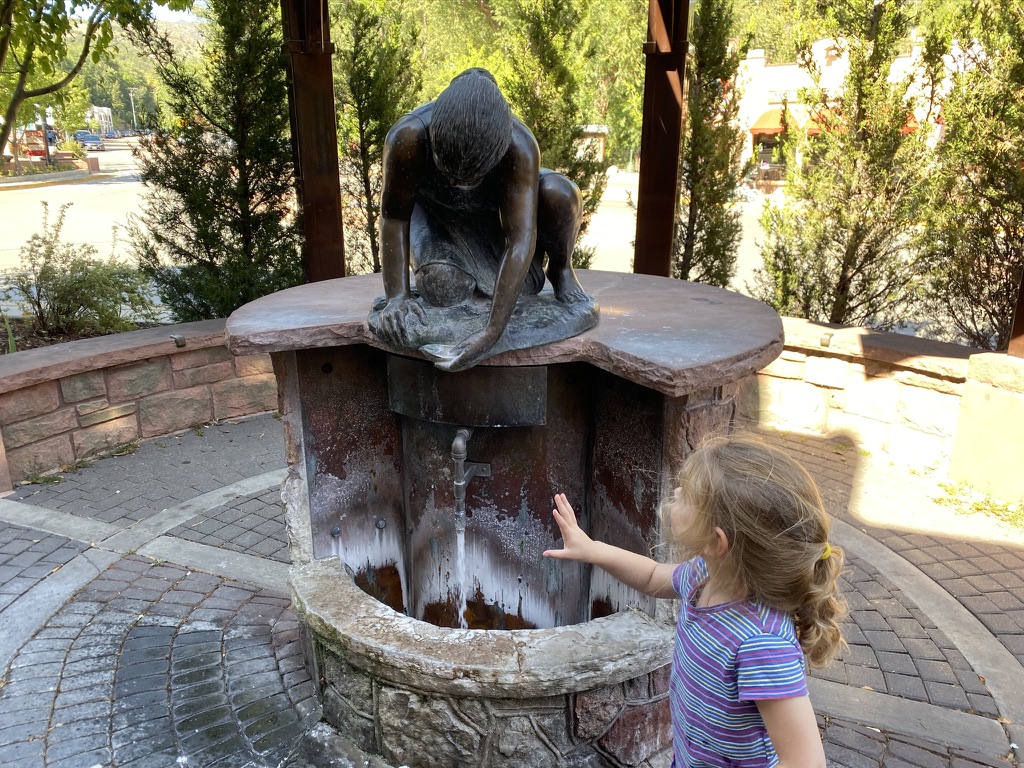
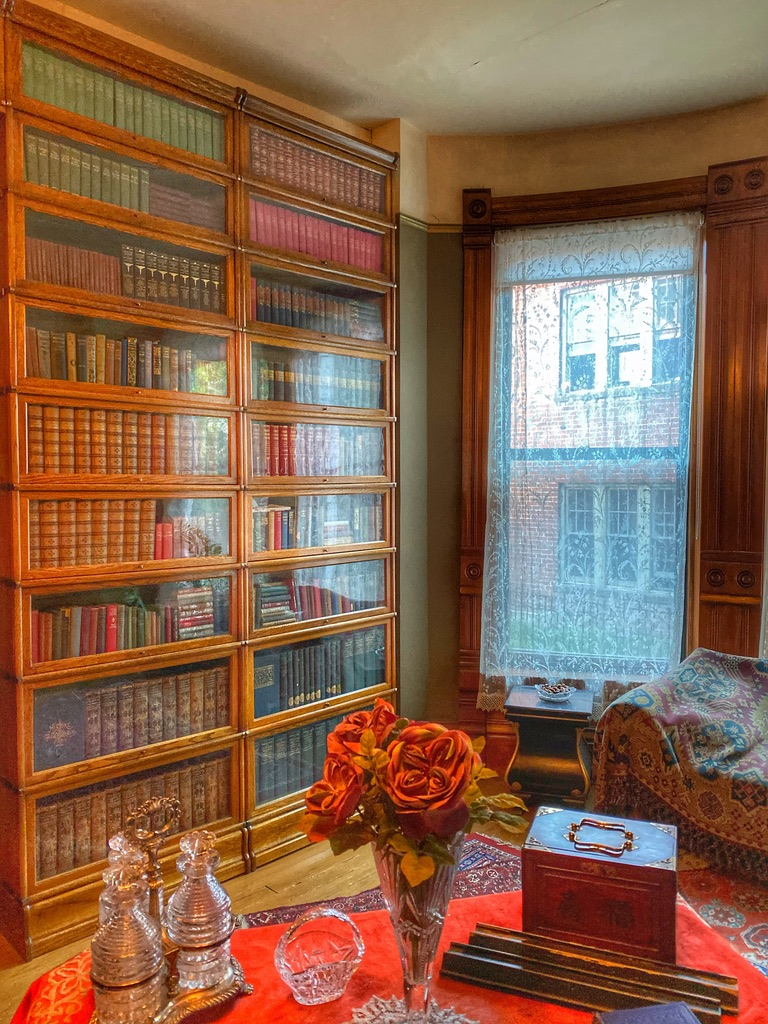
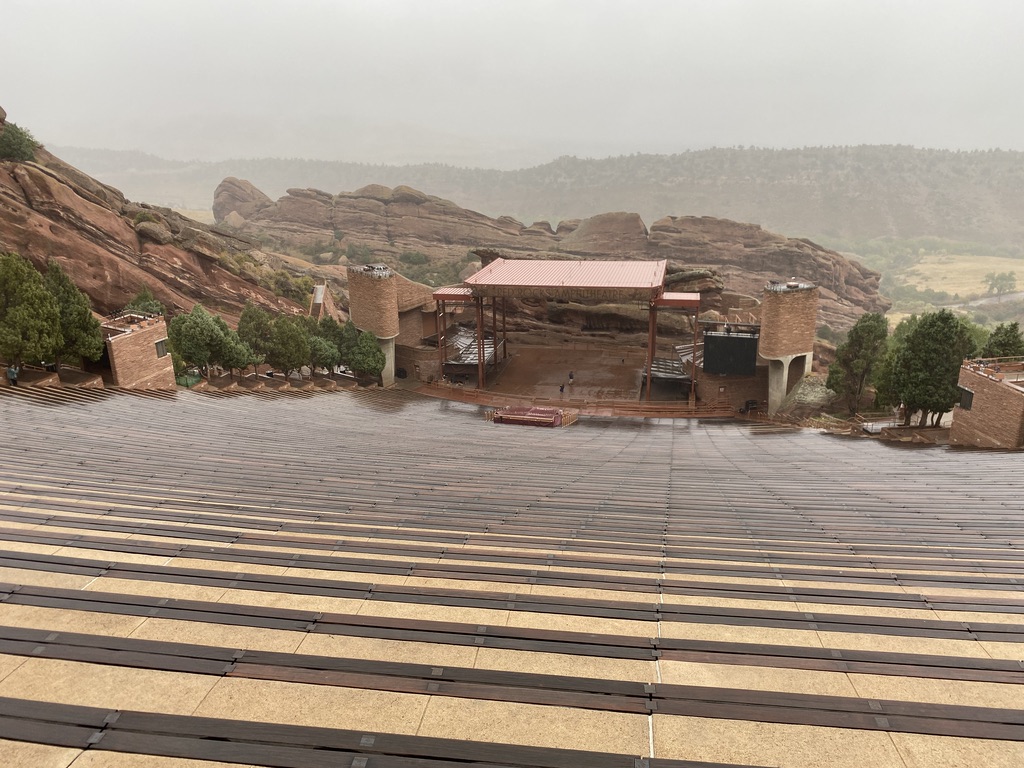
36 Comments
Karen wilson
Great job!! I have a lot to learn from you;)
Pam
What a cool experience. I have always wanted to visit cliff dwellings – I think they sound so interesting.
Cindy
Amazing! I would love to see these. We have done Mesa Verde which was phenomenal but I can always do more Native American history and early American history.
Leeanne
I used to live in Denver and loved going to Manitou Springs. It’s so beautiful down there. This museum is amazing. The amount of clay pots they have is astounding. I love that hut where the kids can grind the corn, how fun? I know my kids would love that.
Lori Nielsen
I’ve been to Mesa Verde and really enjoyed it. This place looks like lots of fun to try also!
Cathy
We’re planning a trip to Colorado, and I’m saving this for future reference. Look like great fun! Love the pics!
jen
i was there years ago. simply stunning. thank you for this article
Stacey Billingsley
Cool! I’d seen this museum when we went to Colorado Springs about ten years ago, but we didn’t make it out there. We need to go back. My youngest was eight months old on that trip. She needs to experience Colorado!
Casandra
I love learning about the history. What a great experience for your children to have fun exploring and learn at the same time.
Jennifer
The cliff dwellings look like an interesting place to learn
kmf
I’m all about history so would love to visit here!
Amanda
Oh, this looks like so much fun! My kids would definitely love it!
Ethel
Fascinating! What a great way to travel back in time and experience how life was back then. We’ve come a long way from how it used to be, but we could still learn a lot from cliff dwellers.
Jordin
Beautiful! I would love to visit and explore these Cliff Dwellings.
Eva Keller
We were supposed to visit here back in March but couldn’t because of coronavirus closures. Luckily we made it to the Gila Cliff Dwellings though. We hope to make it to more places like this in the future.
Lisa Manderino
We wanted to do this the last time we were in Colorado Springs but didn’t have enough time!
Tricia Snow
This looks amazing! I would definitely like to see this!
Hera
I’d be interested in doing a tour to learn more about this kind of historic architecture. It amazes me how civilizations built and lived during their time. Cliff dwellings is term I haven’t heard before, good to know!
Missy
Manitou Cliff Dwellings are amazing.
Taci
So much to see and learn! How cool is that? I would love to check this out.
Jill
This is so beautiful! I’ve always wanted to visit these!
Shirley
My undergrad degree is in history so of course I would love this! Thanks for sharing it.
heather J jandrue
I have never heard of this place. It is beautiful and looks extremely interesting.
Tara
Wow! This looks like such a cool historical site.My boys would love this! And, your pictures are fantastic!
Wendy Robinson
What a cool place. I’d never heard of it before now. Thanks for sharing your fun day.
Trisha
Our family loves visiting anything having to do with history. This would be an awesome, and educational, experience. Thanks for sharing!
Amanda
We are a homeschooling family as well. We study the places that we visit ahead of time. It makes a huge difference with interest levels. I love this post!
Michele
This looks like so much fun! Saving for when we visit Colorado!
Jarid
Your pictures are absolutely gorgeous! This makes me want to travel more!
Sara W
Thank you!
Floby
This is a very creative way for a weekend trip. I love activities like this one, my husband and I want to invest more in doing outdoors exposure for the family.
Margaret
This is on my travel bucket list with my family! We all love anything to do with the past, and I remember reading about this when I was a little kid. It’s always fascinated me. Thanks for sharing your experience.
Anita Doseck
Such a cool trip! And looks like your kids had fun too!
Sara W
They’ve already been asking if we can go back this summer.
Marianne
Looks amazing! Will definitely add to the list for when we make it to Colorado!
Beth Shields
Always fascinating to see how other people’s cultures worked. Thanks for sharing.